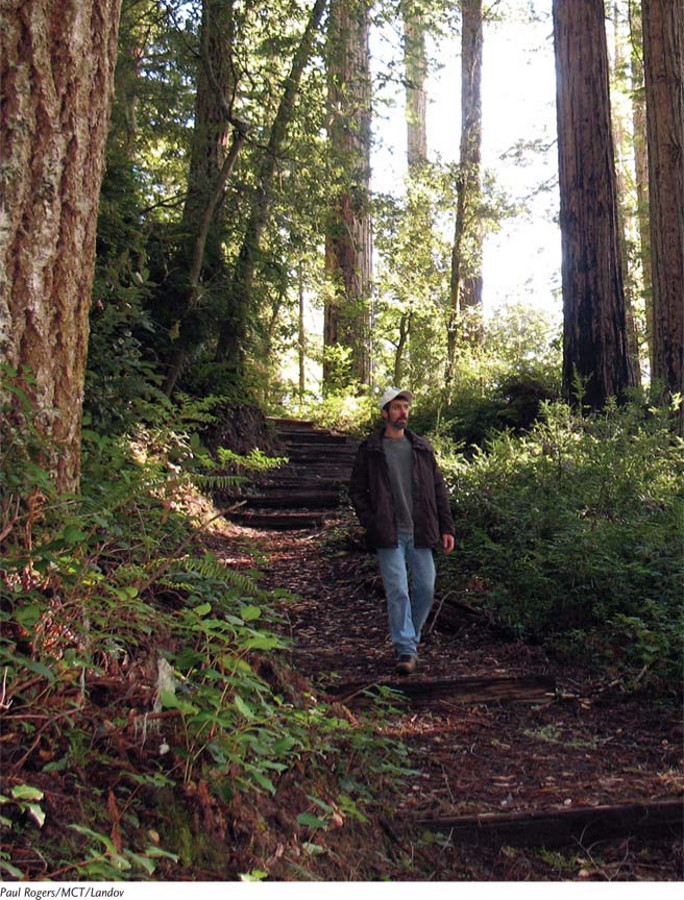Chapter Introduction
chapter 10
Land, Public and Private

Who Owns a Tree? Julia Butterfly Hill versus Maxxam
For most of its history, northern California’s Pacific Lumber Company was a leader in environmental stewardship. It pioneered the practice of selectively cutting some trees on its land while leaving nearby trees intact. Unlike the usual practice of clear-
Julia Butterfly Hill proved indomitable. In her most famous tree sit, she occupied Luna, a 55-
In 1986, however, Pacific Lumber was purchased by new owners and renamed Maxxam. To increase revenue from the company’s land holdings, the new management clear-
The adjacent uncut land, also owned by Maxxam, was home to the largest remaining intact forest of ancient redwood trees as well as to a number of endangered species. Environmental activist Julia Butterfly Hill was appalled by Maxxam’s forest management practices, and in response she joined a “tree sit” on Maxxam’s land organized by the direct action group Earth First!
The ultimate goal of a tree sit is to remain in a tree long enough to save it from logging, although many such actions merely delay the inevitable. Still, activists support tree sits because they gain time for further legal proceedings and increase media awareness. Julia Butterfly Hill proved indomitable. In her most famous tree sit, she occupied Luna, a 55-
Hill’s actions cost Maxxam millions of dollars in delays and lost revenue and brought unsustainable logging practices to the attention of many people. A large debt load forced Maxxam to file for bankruptcy protection in January 2007, and its depleted assets were reorganized and transferred to a new company in 2008.
Maxxam’s logging practices appeared to place profit before sustainability. The new company, though, appears to have implemented more sustainable practices with the trees that remain on its holdings.
The conflict over logging practices raises many questions. Do citizens of the United States have the right to influence what activities occur on private lands? What if the land is public? Was Julia Butterfly Hill a hero or a villain? Some see her as having made a personal sacrifice to save an ancient tree and to bring the issue of unsustainable logging practices to the public’s attention. Others see her as a lawbreaker who trespassed on private property in an effort to prevent a legal activity.
Sources:J. B. Hill, The Legacy of Luna: The Story of a Tree, a Woman, and the Struggle to Save the Redwoods (HarperCollins, 2000); H. Sims, The scion, North Coast Journal, July 20, 2006.
As this opening account about ownership and management of land containing ancient redwood trees illustrates, issues involving land use are complex, and there are no easy solutions to many of the conflicts that arise. In this chapter we will explore how our use of land affects the environment, and how specific land-